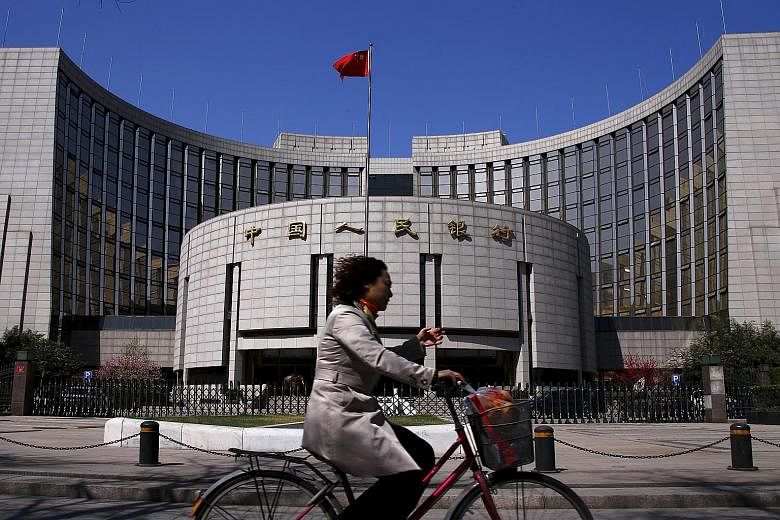Alarming comparisons have been drawn between the recent market turmoil and the meltdown suffered by regional bourses during the Asian financial crisis 18 years ago.
This is one reason investors have been reluctant to pick up the blue chips so badly bruised by the latest sell-off, which has seen major market indexes including the Straits Times Index tumble by up to 15.7 per cent in the past five weeks.
Of course, a powerful rebound arrived late last week after the market plunge but, for many of us, one big question lingers: Is this just a temporary correction or the start of a truly bear market?
Those with history weighing heavily on their shoulders - such as former United States Treasury secretary Lawrence Summers - fear the worst after Wall Street last Monday suffered its largest-ever sell-off since the global financial crisis seven years ago.
Mr Summers noted: "As in August 1997, 1998, 2007 and 2008, we could be in the early stage of a very serious situation."
Others - like Mr William Dudley, who heads the New York branch of the US central bank - see the global stock market rout as largely a problem confined to China, even though Mr Dudley conceded that a "large and prolonged drop" in share prices might cause US consumers to tighten belts and stop spending.
He said: "What we are seeing is not a US problem. This is very different from the (global) financial crisis. That financial crisis was very much about us. This isn't about us."
The latest global market tantrums started with something of a bang, though innocuously enough, with Shanghai plunging 8.5 per cent last Monday - its largest single-day fall in eight years - after a private survey suggested that China's factory sector had shrunk at its fastest pace in more than six years.
Coming hard on the heels of China's surprise devaluation of the yuan just a fortnight before, Shanghai's wobble sent a chill down the spines of jittery investors and sent them scrambling out of markets around the world. The result was pandemonium on a global scale, with Wall Street plummeting more than 1,000 points at one stage.
The pain had also extended beyond stock markets, with regional currencies such as the ringgit and the rupiah falling sharply. Commodities were also hit - crude oil fell to a 61/2-year low of US$38 a barrel.
Even gold - a traditional haven in troubled times - was not spared because investors, who had used it as collateral for buying shares and other assets, were forced to sell the precious metal to meet margin calls.
That China can exert such a powerful influence over investors is not surprising. It now accounts for 16 per cent of global output. Investors are also worried about the threefold jump in its debt levels, which rose from US$7 trillion (nearly S$10 trillion) in 2007 to US$28 trillion last year - a sum that exceeds what the US and Germany combined owe the world.
Now that the pace of growth in China's economy appears to be slowing, investors are looking at the country in horror as its bureaucrats adjust policies clumsily in a seemingly futile effort to stay in control.
Take the recent attempt to tame the stock market after share prices in Shanghai plunged by 32 per cent early last month. The result was another rout, which took prices to an even lower level early last week. Shanghai came under fresh selling pressure, and there was no sign of intervention from Beijing - apart from giving its pension plans the go-ahead to buy shares directly, and loosening liquidity by cutting interest rates and reducing reserve requirements for Chinese banks.
As if the situation was not chaotic enough in the Shanghai stock market, the People's Bank of China chose this of all times to abandon the yuan's peg to the US dollar. That only exacerbated investor panic, given the ambivalent signals being sent about the Chinese economy.
Given how Chinese policymakers seem to have tied themselves up in knots trying to stabilise the Shanghai market and prop up the yuan, are we then to attribute the recent turmoil to their missteps?
We must bear in mind that there is pressure coming from another direction - the strengthening of the US dollar and the prospect of an interest rate hike by the US Federal Reserve - which is causing a squeeze on liquidity in emerging markets.
According to some estimates, worries over these issues have caused about US$1 trillion worth of emerging market assets to be sold off since the start of the year.
As a result, it is not surprising to find market pundits raising the spectre that we could see a replay of the 1997-98 Asian financial crisis. Even so, this possibility would seem low, for now.
The currency pegs that triggered the crisis back then have largely been replaced by floating rate regimes. Also, Asian countries have since fortified themselves with huge piles of foreign reserves, to make sure that history does not repeat itself.
Further, regional companies have borrowed mostly in domestic currencies, rather than US dollars. This ensures that, even if there is again a run on the region's currencies, there will be none of the systemic risk faced by banks because companies find their US dollar loans prohibitively expensive to service.
Still, there are very sound reasons for concern. The origins of the current market upheaval can be traced to the 4 trillion yuan economic stimulus package launched by China as the world's financial system went close to the brink of collapse in 2008.
This old-fashioned pump-priming helped to trigger a commodities boom, and ultimately caused a surge in Chinese demand for everything from base metals to US cars.
In the end, China built lots of houses, offices and steel mills that it did not need.
Worse, while the US, Europe and Japan have kept their money-printing presses on overdrive in the past few years to revive their moribund economies, China has let the yuan appreciate against the US dollar and other major currencies. That has eroded its economic competitiveness.
China now recognises that pumping money into the system to buy economic growth is not feasible, and it has trimmed its capital investments accordingly. This has led to a collapse in Chinese demand for commodities, hurting economies from Brazil to Australia as raw material prices falter.
As Financial Times columnist Martin Wolf observes, whatever combination of options taken by China to clean up its past financial excesses - devaluation, ultra-low interest rates or quantitative easing - it will have a destabilising effect on the rest of the world.
It could be a while more before we see the fruits of China's rebalancing act. In the meantime, second-guessing what will happen next in China will lead to more market turbulence.
For investors, it is time to belt up and get ready for a roller-coaster market ahead.


